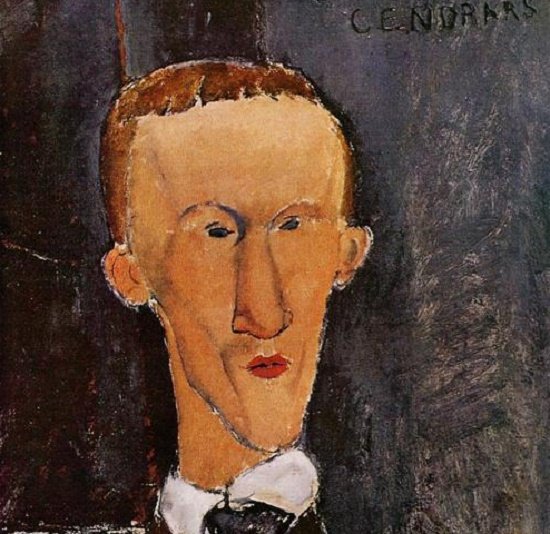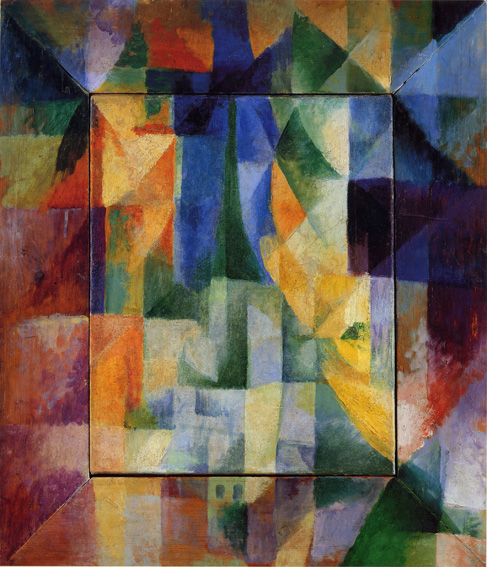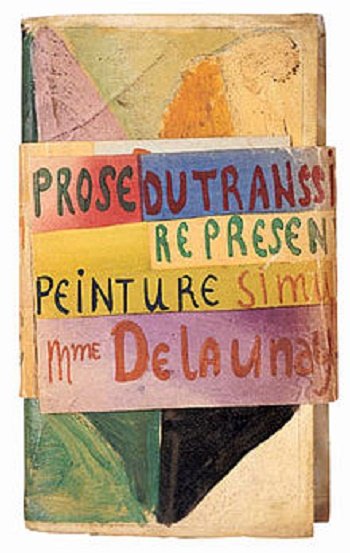Estimados lectores de #Hive, hace un buen tiempo (desde la plataforma anterior) inicié una larga serie para presentar los grandes hitos colectivos (movimientos / grupos) o individuales impulsores de la modernidad estético-literaria, con énfasis en la poética. Lo había dejado de hacer pero quiero retomar esa serie a partir de este post. Si estás interesado en el último publicado ver aquí y en los anteriores con este enlace.
Dear #Hive readers, some time ago (from the previous platform) I started a long series to present the great collective (movements / groups) or individual milestones driving aesthetic-literary modernity, with emphasis on poetics. I had stopped doing it but I want to resume that series from this post. If you are interested in the last one published see here and in the previous ones with this link.

====================
La renovación de la poesía que se produce a comienzos del siglo XX tuvo una relación de influencia notable venida de las artes plásticas, particularmente de la pintura. En la búsqueda de un nuevo lenguaje, tanto el cubismo primero, como el futurismo luego, coincidieron en esa línea que se identificará con el nombre de simultaneísmo, pues se trataba del intento de expresar el carácter simultáneo de la realidad, de la vida, en la creación estética. Así, el cubismo se propone presentar las diferentes partes de los objetos y de sus interrelaciones; y el futurismo hacer entrar la temporalidad en la obra a través de la incorporación de la sensación y el movimiento, lo que no pudo lograr satisfactoriamente.
En pintura, además del cubismo, también el orfismo, cuyo principal representante fue Robert Delaunay, lograron presentar sobre un mismo espacio y tiempo diversas formas y colores captados simultáneamente por el espectador. Pero en el campo verbal, cuya organización es sucesiva –palabras que siguen unas después de otras–, el problema es cómo alcanzar una disposición que en el espacio de la escritura fuera simultánea.
Uno de los que avanzó bien en esa dirección fue el poeta francés Blaise Cendrars.
The renewal of poetry that took place at the beginning of the twentieth century had a notable influence coming from the plastic arts, particularly painting. In the search for a new language, both cubism first, and then futurism, coincided in that line that will be identified with the name of simultaneism, since it was an attempt to express the simultaneous character of reality, of life, in aesthetic creation. Thus, cubism proposes to present the different parts of objects and their interrelationships; and futurism to bring temporality into the work through the incorporation of sensation and movement, which it could not achieve satisfactorily.
In painting, in addition to Cubism, also Orphism, whose main representative was Robert Delaunay, managed to present in the same space and time diverse forms and colors captured simultaneously by the spectator. But in the verbal field, whose organization is successive -words that follow one after the other-, the problem is how to achieve an arrangement that in the space of writing would be simultaneous.
One of those who advanced well in that direction was the French poet Blaise Cendrars.

Blaise Cendrars, quien se destacara como poeta y novelista, aunque también fuera ensayista y traductor, nació en 1887 y murió en 1961. Tuvo una vida de viajero y aventurero; viajó por Europa, Rusia y Asia, desempeñando diversos oficios. En 1912 publicó Pascua en Nueva York, y el famoso Prosa del Transiberiano y de la pequeña Jeanne de Francia en 1913, dos largos poemas que son señalados por la crítica como las obras ejemplares de su aporte a la consecución del carácter simultáneo en la poesía moderna. Entiéndase que con este aporte, que continuará Apollinaire (de quien hablaré en posts siguientes), la poesía posterior cambiará y se enriquecerá poderosamente.
¿Qué hace Cendrars en su poesía? La respuesta la encontramos, especialmente, en lo dicho por el escritor mexicano Octavio Paz, quien señala que Cendrars
se sirve de un método de composición que no es otro que el del relato. Un relato entrecortado, con idas y venidas, anticipaciones, interrupciones, digresiones y enlaces imprevistos.
Acota Paz que su estilo es cercano al del cine, como si se tratara de un “montaje”; no está tan próximo a la pintura, al collage.
Pero más, precisa Paz que ese acercamiento tiene como premisa el uso del lenguaje hablado:
El habla de todos los días, el lenguaje cotidiano que fluye y transcurre y no el instante (…) fue el canal por el que penetró en la poesía de nuestro siglo el tiempo real, el tiempo simultáneo y discontinuo.
Blaise Cendrars*, who stood out as a poet and novelist, although he was also an essayist and translator, was born in 1887 and died in 1961. He had a life of traveler and adventurer; he traveled through Europe, Russia and Asia, performing various trades. In 1912 he published Easter in New York, and the famous Prosa del Transiberiano y de la pequeña Jeanne de Francia in 1913, two long poems that are pointed out by the critics as exemplary works of his contribution to the achievement of the simultaneous character in modern poetry. It is to be understood that with this contribution, which will be continued by Apollinaire (of whom I will speak in subsequent posts), later poetry will change and be powerfully enriched.
What does Cendrars do in his poetry? The answer is to be found, especially, in the words of the Mexican writer Octavio Paz, who points out that Cendrars
uses a method of composition that is none other than that of the story. A choppy story, with comings and goings, anticipations, interruptions, digressions and unforeseen links.
Paz notes that his style is close to that of cinema, as if it were a "montage"; it is not so close to painting, to collage.
But more, Paz specifies that this approach is premised on the use of spoken language:
Everyday speech, the everyday language that flows and passes and not the instant (...) was the channel through which real time, simultaneous and discontinuous time, penetrated into the poetry of our century.

Uno de los textos más ilustrativos del simultaneísmo en Cendrars, como adelanté, es [Prosa del Transiberiano y de la pequeña Jeanne de Francia]; pero es muy largo, así que solo podré citar unos dos o tres fragmentos para comentarlos, antecediéndolos de una especie de síntesis del poema.
Prosa del Transiberiano…, publicado en 1913, inicia con la evocación de la adolescencia del poeta, quien se encuentra en Moscú en el tiempo preliminar a la Revolución Rusa, en un mundo violento y bélico. Una mañana de diciembre logra salir en un tren que atraviesa Europa, pero también, por la imaginación, distintos tiempos y lugares del mundo. Es “una odisea sórdida por un mundo de muertos, cansancio y prostitución”, pero el viaje se realiza mientras una pareja hace el amor, como anota Benko.
One of the most illustrative texts of simultaneism in Cendrars, as I have already mentioned, is Prose from the Trans-Siberian and Little Jeanne of France; but it is very long, so I will only be able to quote two or three fragments to comment on them, preceding them with a sort of synthesis of the poem.
Prose of the Trans-Siberian..., published in 1913, begins with the evocation of the poet's adolescence, who finds himself in Moscow in the time leading up to the Russian Revolution, in a violent and warlike world. One December morning he manages to leave on a train that crosses Europe, but also, by imagination, different times and places in the world. It is "a sordid odyssey through a world of the dead, exhaustion and prostitution," but the journey takes place while a couple makes love, as Benko notes.
Continúa en el próximo post. | Continue in the next post.
Referencias | References:
Benko, Susana (1993). Vicente Huidobro y el cubismo. Caracas: Monte Ávila Editores - Fondo de Cultura Económica.
Paz, Octavio (1985). Los hijos del limo / Vuelta. Colombia: Edit. Oveja Negra.
Puede descargar Prosa del Transiberiano… traducida al español entrando a este enlace.
You can download Prose of the Trans-Siberian... translated into English by clicking on this link

Gracias por su lectura. | Thank you for reading.



#posh
¡Hola, buenísimo tu post! Una cosita, hubo un error de teclado en el título en español, colocaste poseía en vez de poesía. Saludos.
Esta publicación ha recibido el voto de Literatos, la comunidad de literatura en español en Hive y ha sido compartido en el blog de nuestra cuenta.
¿Quieres contribuir a engrandecer este proyecto? ¡Haz clic aquí y entérate cómo!
Hola, mi querido amigo literato @josemalavem
No sabía que existía esa tendencia artística llamada Simultaneidad.
Me parece muy interesante, todo lo expresado en tu publicación.
La vida de viajero debe ser tremendamente activa y creativa.
Me gustaría viajar mucho, tal como lo hizo ese escritor Blaise Cendrars, quien falleció el año en que nací.
Un abrazo